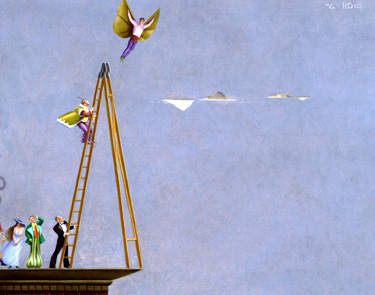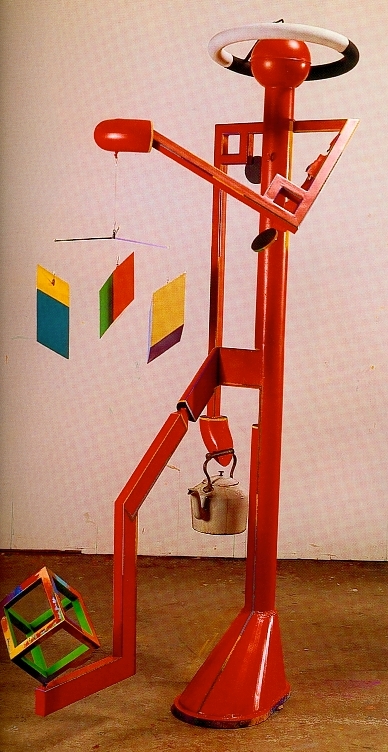|
|
||
“Imagination was given to man to compensate him for what he isn’t. A sense of humor was provided to console him for what he is.” --Horace Walpole
The writer Balthasar Gracian once observed that “sometimes the things of this world can be truly perceived only by looking at them backwards.” Whether in literature or in visual art, the term symbolic inversion points to a form of creative expression in which commonly held cultural concepts, values and norms are inverted or contradicted. The artist’s world therefore is a reversible world — a world viewed and analyzed with the telescope turned backwards. Images conjured by inversion, contradiction, free-association and incongruous analogy reflect the idiosyncratic modus operandi of comic creativity. Witticisms and jokes are products of perspective reversal, of twisting things around. This mode of thinking — of turning the world upside down — fires the procreative brain synapses of the artful jesters. The comically-inclined artist, it seems, cannot originate a single thought without having an opposite or contrary one emerge at the same time. Fortunately for these people (and for us) this pathological affliction can be developed into a highly effective work ethic.
By definition, visual humor is “funny art” but it is never funny by itself. Because it is content-oriented, that is, about something, it is used by artists to produce not only comic associations, but not-so-comic witticisms which deal with social and political issues. Clearly, the genres of whimsy and comic nonsense have no ax to grind; their raison d’etre is to simply provide a few laughs and momentary diversion from the world’s troubles and woes. Parody and satire, on the other hand, are genres that incite laughter with wry humor, but at the same time tweak our conscience by holding forth a mirror which reflects our diminished humanity and its foibles. When Confucius said, “an ounce of mirth is worth a pound of sorrow,” he alluded to humor’s value as a restorative and sustainer of psychological health. Plato once remarked , “serious things cannot be understood without laughable things,” alluding to humor’s importance as a learning tool. The fact of the matter is that visual humor is directed to both objectives, diversion and education, and provides an essential service on both counts. Each of us invents humor as we discover the humor invented
by others.
|
||
|
© 2006 Nicholas Roukes. All Rights Reserved |
||

